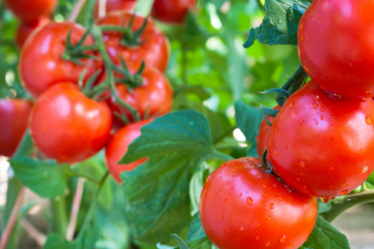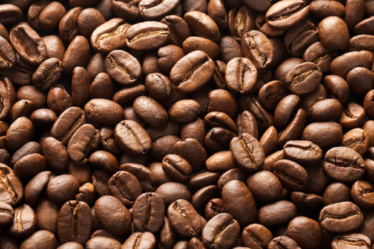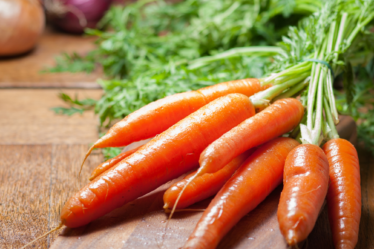
With a few indoor plants spread around the house, you won’t exactly need too many gardening supplies for taking care of your plants. You can actually make do with the simple tools and utensils you have in your home, but having the right supplies can also make your gardening duties easier. You won’t need to buy more than a handful of affordable specialized gardening tools, but they will definitely make your gardening more fruitful. So using this indoor plants guide you’ll know how to properly take care of indoor plants.
When we think of gardening tools, we usually think of the bigger tools like a shovel, a rake or spades. These are tools needed for large gardens and outdoor gardening, not for the tiny potted plants you have in your home. For these plants, you’ll need some specialized gardening tools, designed for house plants, indoor plants, and potted plants.
Here is a list of all the gardening supplies you might need for your indoor gardening.
- Hand Forks
What’s done with spades in outdoor gardening needs to be done with a hand fork in your houseplants. A hard fork for gardening looks just like a regular fork that you use for eating, only larger and stronger. You need this tool to break up the soil that solidifies when dry or cakes up with water. Mixing fertilizer to your potted plants also requires the use of a hand fork.
Hand forks are available in large and small sizes, with three prongs or more. The smaller ones can be used for small plants and pots for your window ledge, tabletops, and open shelves, while the larger ones are more suitable for large plants kept on the floor. For even smaller potted plants, you can simply use a table floor with the same effectiveness.
The primary function of a hand fork is to mix fertilizer to the soil, but also to loosen up the soil so that air and moisture can seep through. You can also use a hand fork for planting and repotting.
- Pruners
Pruners are essentially scissors that you can use to cut smaller branches, leaves, flowers, and tips. They are specially designed so that you can cut the densest branches with minimum pressure on your hands; most pruners can cut through branches and stems that have a thickness of up to ¾ inches. While you can use a pair of household scissors to cut leaves, soft stems, tendrils, and flowers, you’ll need the help of pruners for a clean cut on thicker branches.
- Transplanters
These are tools that you need to transfer your plants to another pot, planting bulbs, or transferring your tiny plants from indoors to outdoors, and vice versa. You can also use this shovel-like tool to scoop in soil into pots, as well. Transplanters aren’t exactly a necessary tool in gardening, but you’ll probably need its help if you like to move your plants around the house, from one pot to another, or from indoors to outdoors.
- Indoor Watering Cans
Indoor watering cans are smaller and more compact than outdoor watering cans, with a narrower and longer neck and a smaller opening. You can get cans with a separate sprinkler attachment, both for a direct outpour or for a shower. If you have a watering can with a long neck, you can pour water directly on the soil without a single drop around the pot, which is important for potted plants on tabletops and shelves. For potted plants on window boxes, balconies, and terraces, you can use the sprinkler attachment that will clean the leaves as well as pour water on the soil.
Stainless steel watering cans are the most practical ones; they are durable and don’t weigh a lot, and they usually come with the right holding capacity for indoor plants.
- Drainage Trays
Most pots come with their own drainage trays, but you can buy larger ones separately to house more than one potted plant. Drainage trays are extremely important if you don’t want the excess water from pots to come out at the bottom and dirty your floors and furniture. Even the larger potted plants in your living room and dining rooms can leak and damage your carpets, rugs and furniture legs. With the right-sized drainage trays, you won’t have to worry about any dirt on the floor or your furniture; they are also very easy to clean with wiping or under running water.
- Grow Lights
Grow lights, too, aren’t a staple gardening supply but very helpful. If you have plants that need a bright light that you don’t have in your home, grow lights can help. These lights come in a number of shapes and sizes, price ranges and spectrums. For weak plants that need a tiny boost, there are a number of affordable grow lights available that can help your plants.
Grow lights are more important during winter when natural sunlight is sparse and only available for a short time. Many of these grow lights come with both warm and cool light options, and can keep your plants happy and healthy even in the harshest cold.
- Soil Tester
Soil testers can be quite helpful in testing the quality of the soil you are using in your plants. Even the most reasonably priced soil testers can measure the level of moisture and pH levels in your soil. All you need to do, with a regular soil tester, is to insert the probe deep into the soil, and it will tell you the condition of the soil.
- A dehumidifier or Humidity Tray
You’ll need a humidifier in your home if there is too much humidity in your rooms. High humidity in the air will cause molds to grow in your plants, cause the soil to rot, and lead to other moisture-related diseases in plants. A dehumidifier can control the humidity in the room when needed. Usually, they are small enough to concentrate only on your plants, or big enough to dehumidify the whole room.
Dehumidifiers are quite expensive, but you can find an affordable solution for humidity trays. These are regular plastic, wooden or glass trays, both wide and long. You need to place a few pebbles on them, and pour water on the pebbles; then, put your potted plants on top of the pebbles.
With a large humidity tray, you can group more than one potted plant together. When the water under the pebbles starts to evaporate, the humidity levels around the plants increase. These humidity trays are perfect for certain plants that need a high level of humidity for growing well. Humidity trays are also great for growing air plants, which can survive on the water without soil.
- Plant Stakes
Stakes for growing plants are usually made from chopped wood; but if you aren’t handy with an ax, you can actually buy them at your local gardening shops, hardware stores and even online.
Some indoor plants need extra support to grow, as they tend to shoot upwards within a very short time or require support to grow. Store-bought plant stakes are smooth and polished, so there’s no chance to prick your fingers on them. Instead of plant stakes, you can also but simple bamboo skewers for the same reason.
- Wi-Fi Plant Sensors
If you are looking for something extra for your plants and don’t need to bother about the price, you can also get Wi-Fi sensors for your plants. These are actually quite expensive, but a sensor inserted into the soil will let you know the condition of your soil via an app. Even when you are outside, you’ll know which plants at home need to be watered or bought to light.
Wi-Fi plant sensors can sense the temperature of the soil in the pots, the moisture and the lighting requirements of individual trees. You can have access to these Wi-Fi sensors via apps on your iPhone or Android phones, or even through a web app. Each pot will need a separate sensor, or you can get one to use on whichever plant you are worried about at the moment.
Some gardening tools are an absolute necessity for you, whether you have one plant or a dozen; others, you can only get if you are really serious about your plants. However, one thing is clear: all indoor gardening tools have been designed to help you and your plants. These simple yet extremely helpful tools can help you to keep your plants healthy and happy, and your home looking clean and fresh at all times.



